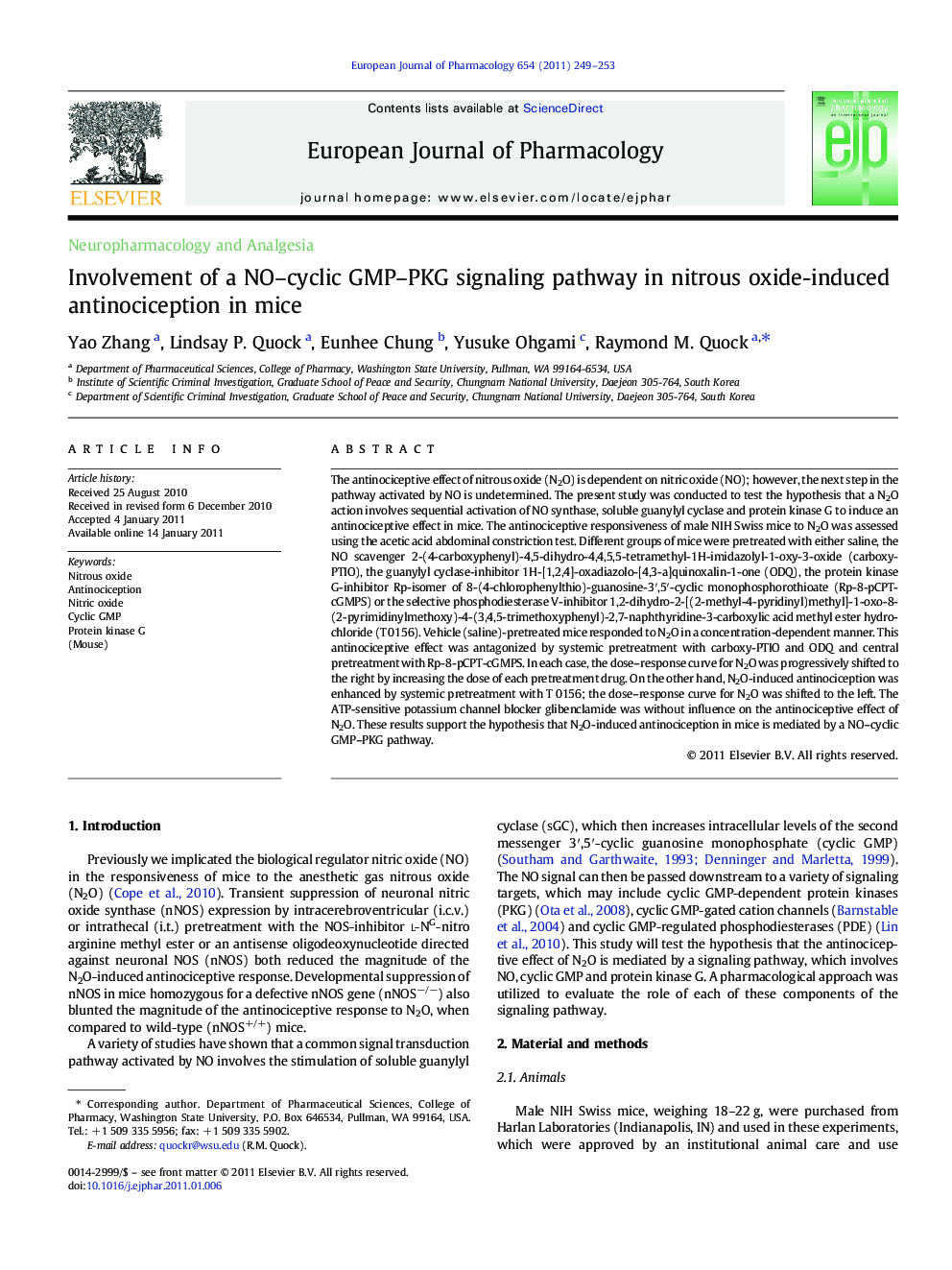| کد مقاله | کد نشریه | سال انتشار | مقاله انگلیسی | نسخه تمام متن |
|---|---|---|---|---|
| 2532973 | 1559034 | 2011 | 5 صفحه PDF | دانلود رایگان |

The antinociceptive effect of nitrous oxide (N2O) is dependent on nitric oxide (NO); however, the next step in the pathway activated by NO is undetermined. The present study was conducted to test the hypothesis that a N2O action involves sequential activation of NO synthase, soluble guanylyl cyclase and protein kinase G to induce an antinociceptive effect in mice. The antinociceptive responsiveness of male NIH Swiss mice to N2O was assessed using the acetic acid abdominal constriction test. Different groups of mice were pretreated with either saline, the NO scavenger 2-(4-carboxyphenyl)-4,5-dihydro-4,4,5,5-tetramethyl-1H-imidazolyl-1-oxy-3-oxide (carboxy-PTIO), the guanylyl cyclase-inhibitor 1H-[1,2,4]-oxadiazolo-[4,3-a]quinoxalin-1-one (ODQ), the protein kinase G-inhibitor Rp-isomer of 8-(4-chlorophenylthio)-guanosine-3′,5′-cyclic monophosphorothioate (Rp-8-pCPT-cGMPS) or the selective phosphodiesterase V-inhibitor 1,2-dihydro-2-[(2-methyl-4-pyridinyl)methyl]-1-oxo-8-(2-pyrimidinylmethoxy)-4-(3,4,5-trimethoxyphenyl)-2,7-naphthyridine-3-carboxylic acid methyl ester hydrochloride (T 0156). Vehicle (saline)-pretreated mice responded to N2O in a concentration-dependent manner. This antinociceptive effect was antagonized by systemic pretreatment with carboxy-PTIO and ODQ and central pretreatment with Rp-8-pCPT-cGMPS. In each case, the dose–response curve for N2O was progressively shifted to the right by increasing the dose of each pretreatment drug. On the other hand, N2O-induced antinociception was enhanced by systemic pretreatment with T 0156; the dose–response curve for N2O was shifted to the left. The ATP-sensitive potassium channel blocker glibenclamide was without influence on the antinociceptive effect of N2O. These results support the hypothesis that N2O-induced antinociception in mice is mediated by a NO–cyclic GMP–PKG pathway.
Graphical AbstractFigure optionsDownload high-quality image (114 K)Download as PowerPoint slide
Journal: European Journal of Pharmacology - Volume 654, Issue 3, 11 March 2011, Pages 249–253